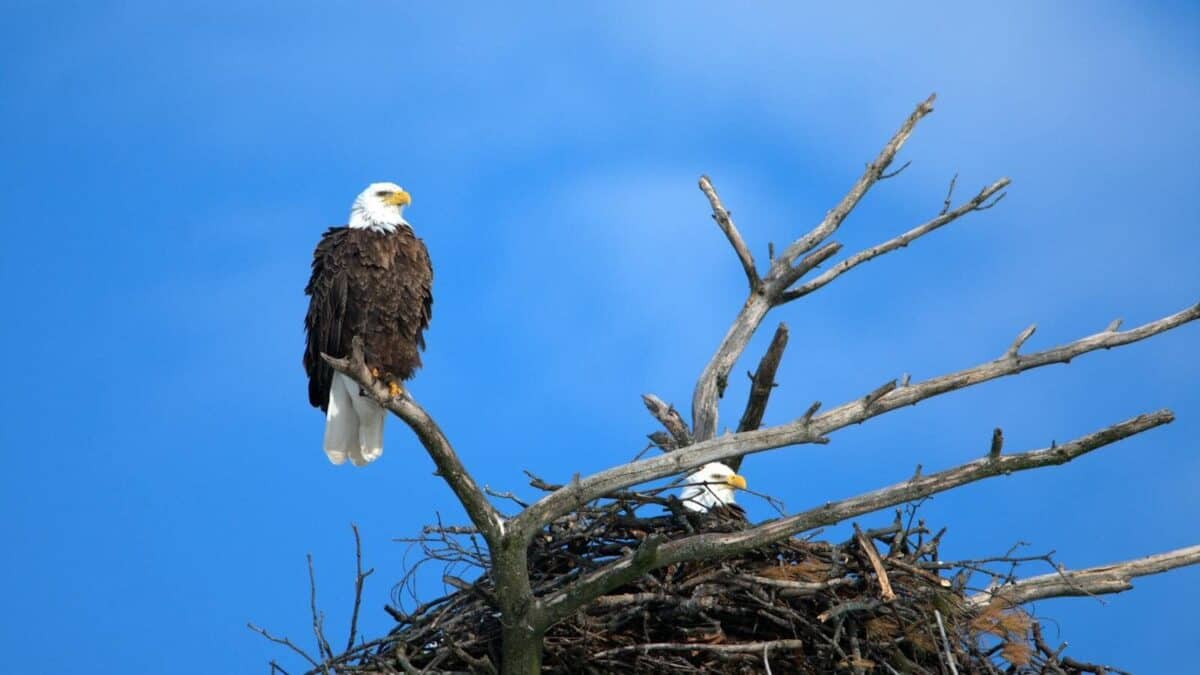The majestic bald eagle, America’s national bird, is renowned not only for its impressive wingspan and piercing gaze but also for its remarkable dedication to a single partner throughout its life. While many species in the animal kingdom engage in multiple mating relationships, bald eagles stand out for their commitment to monogamy. These magnificent birds typically choose one mate and remain faithful to that partner until death separates them. The process of mate selection among bald eagles is fascinating, combining elaborate courtship displays, practical nest-building collaborations, and careful compatibility assessments. Understanding how these iconic birds form their lifelong bonds provides insights into their complex social behaviors and reproductive strategies that have evolved over millennia to ensure the survival of their species.
The Significance of Monogamy in Bald Eagles

Bald eagles (Haliaeetus leucocephalus) practice what biologists call “mate fidelity,” maintaining the same partner year after year throughout their adult lives. This monogamous relationship can last 20-30 years, matching the typical lifespan of eagles in the wild. Such dedication to a single partner is relatively uncommon in the animal kingdom but serves important evolutionary purposes for these raptors.
The primary advantage of lifelong pairing lies in reproductive efficiency. Once eagles find a compatible mate, they can focus on territory defense and successful breeding rather than spending energy on finding new partners each season. Research shows that established pairs produce more offspring over time than newly formed couples, as they develop coordinated hunting and nesting strategies that improve with each breeding season. The stability of these relationships contributes significantly to the species’ recovery from near-extinction in the mid-20th century.
The Age of Mate Selection

Bald eagles typically reach sexual maturity between 4-5 years of age, coinciding with the development of their characteristic white head and tail feathers. Prior to this maturation, juvenile eagles sport mottled brown plumage and spend their early years developing hunting skills and exploring potential territories. Once they reach breeding age, finding a suitable mate becomes a primary focus, particularly during the pre-breeding season months of late fall and early winter.
Interestingly, studies have documented that some eagles begin forming pair bonds as early as 3 years of age, though actual breeding usually doesn’t commence until full maturity. This extended courtship period allows young eagles to develop the necessary skills for successful reproduction while strengthening their partnership. Eagles that pair up at the optimal age of 4-5 years generally demonstrate higher reproductive success than those that attempt breeding either too early or significantly later in life, highlighting the importance of timing in mate selection.
Aerial Courtship Displays
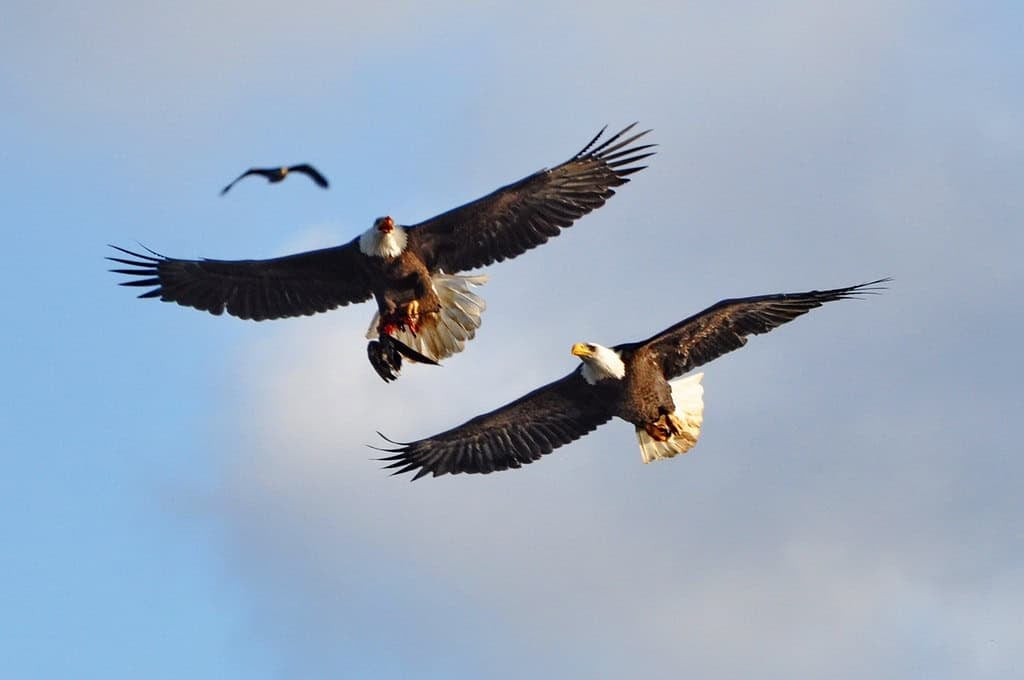
Perhaps the most spectacular aspect of bald eagle mate selection is their elaborate aerial courtship displays. The most famous of these is the “cartwheel display,” where two eagles fly to great heights, lock talons, and tumble toward earth in a breathtaking spiral, separating just before reaching the ground. This high-risk behavior demonstrates physical fitness, coordination, and trust—all crucial qualities in a potential lifelong partner.
Other aerial displays include chase flights, where eagles pursue each other through complex maneuvers, and gift presentations, where one eagle captures prey and transfers it mid-air to a potential mate. Researchers have documented up to 15 distinct flight patterns used during courtship, with different eagle pairs seeming to develop their own signature variations. These aerial ballets serve not only to attract mates but also to strengthen bonds between potential partners, providing opportunities to assess each other’s flying abilities and overall health—critical factors for species that hunt cooperatively and defend extensive territories.
Vocalizations and Communication
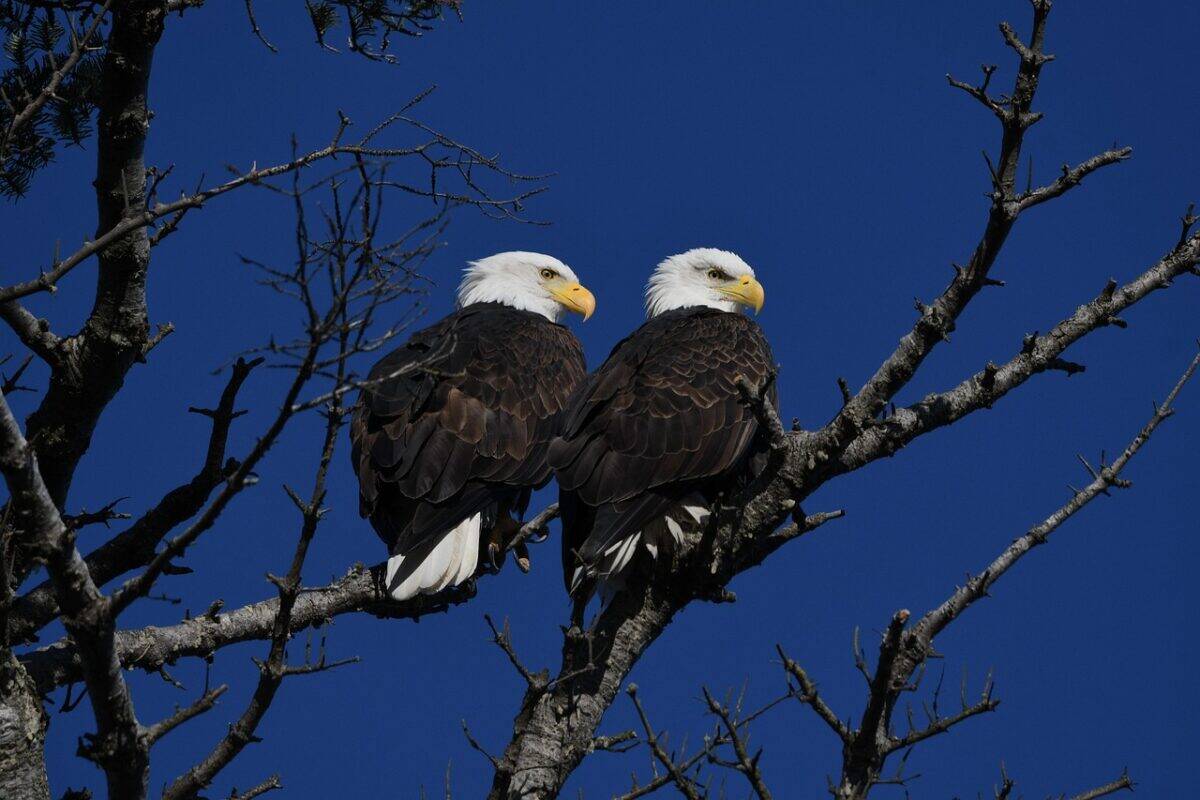
Contrary to their fierce appearance, bald eagles produce surprisingly high-pitched vocalizations during courtship. These calls, described as a series of chirps, whistles, and chatters, play a crucial role in mate selection. Each eagle has slightly different vocal characteristics, allowing individuals to recognize their partners even in crowded nesting areas. During courtship, pairs develop a repertoire of calls unique to their relationship, creating a form of private communication.
Scientists studying eagle communication have identified at least eight distinct vocalizations used specifically during the mate selection process. The frequency and intensity of these calls often correlate with successful pairing. Eagles that respond appropriately to each other’s vocalizations demonstrate compatibility in communication styles, which predicts their ability to coordinate during hunting and nesting activities. This vocal harmony represents another dimension of compatibility assessment beyond the physical displays that are more easily observed by researchers.
Nest Building as Compatibility Testing
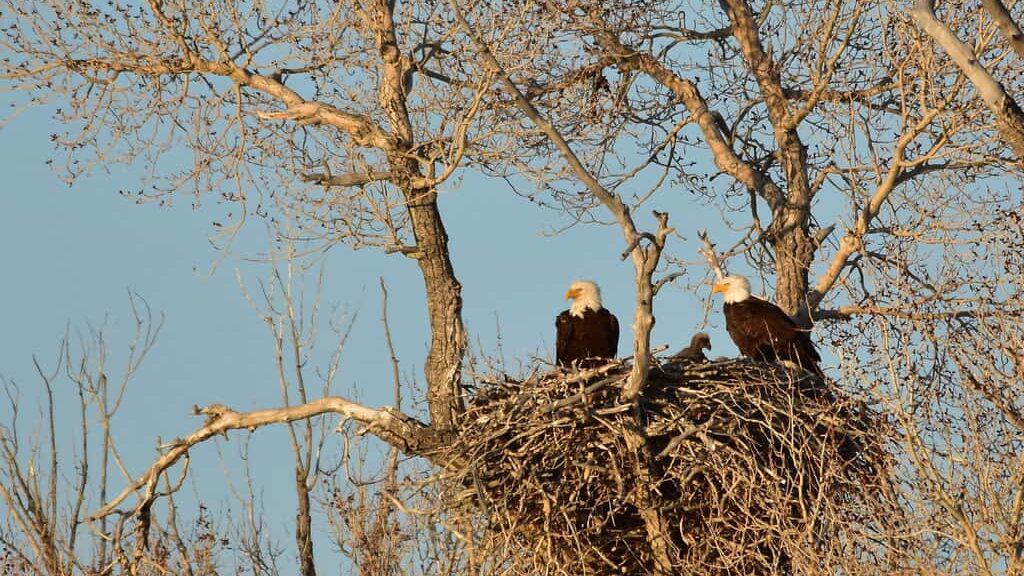
Nest construction serves as a critical compatibility test for potential eagle pairs. Bald eagles build some of the largest nests of any North American bird, with structures averaging 4-5 feet in diameter and 2-4 feet deep. These massive nests, known as eyries, require significant cooperation to build and maintain. During the mate selection process, eagles often work together on nest construction or renovation as a way to evaluate their potential partner’s work ethic and collaboration skills.
The process begins with eagles bringing sticks and arranging them in a specific pattern. Each partner must complement the other’s building style, and conflicts over construction techniques can lead to the dissolution of a potential pairing. Successful nest-building collaboration indicates promising long-term compatibility. Studies show that eagles who efficiently coordinate nest construction typically demonstrate better parenting behaviors later, including more equitable division of incubation duties and food provision for nestlings. These massive nests also serve as the physical foundation of the eagles’ relationship, with established pairs returning to and expanding the same nest for many consecutive years.
Territory Considerations in Mate Choice
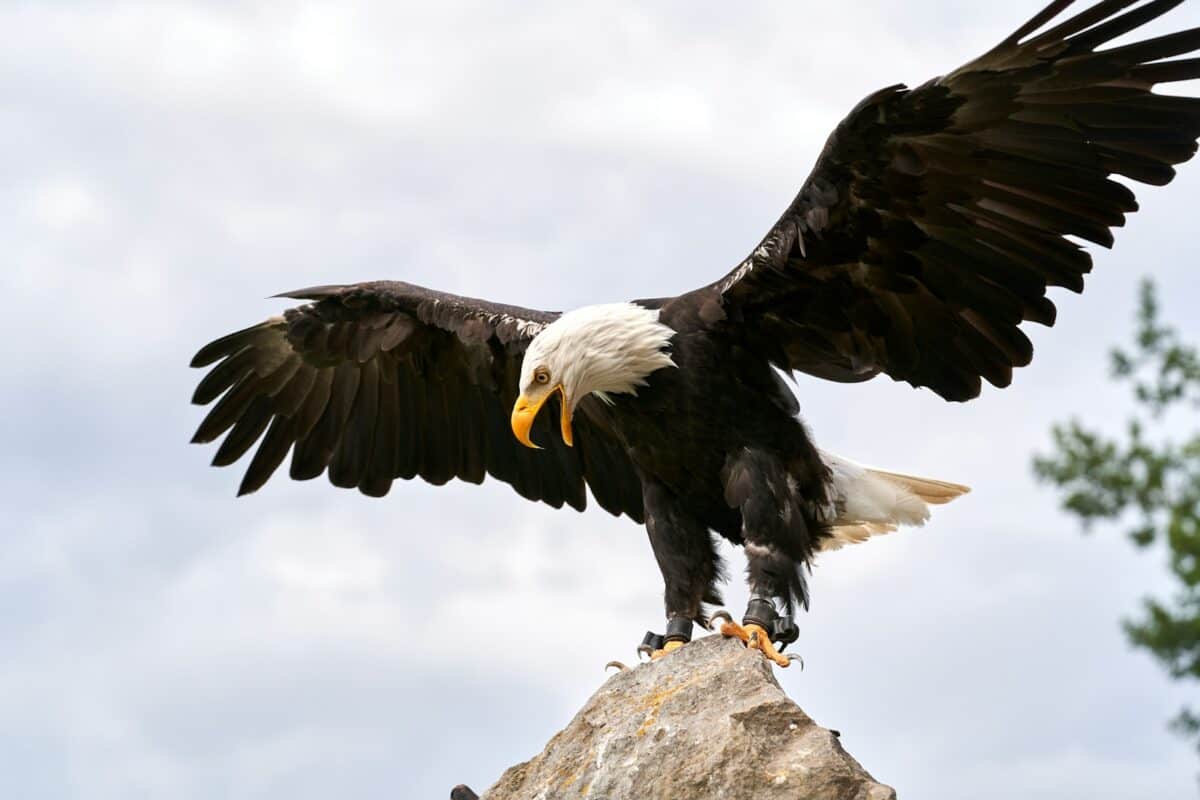
The quality of a territory significantly influences mate selection in bald eagles. Prime territories feature abundant food sources (typically fish-rich waters), suitable nesting trees, and limited human disturbance. Eagles seeking mates often evaluate not just the individual but also the territory they inhabit or can defend. A potential mate with access to superior hunting grounds becomes inherently more attractive, regardless of physical attributes.
Territory defense capabilities also factor into mate selection. Eagles observe how potential partners respond to territorial intrusions, with decisive and successful defense behaviors signaling desirable traits. Research indicates that territory quality correlates strongly with reproductive success, with pairs in optimal territories producing up to three times more offspring over their lifetime than those in marginal habitats. This practical consideration demonstrates that bald eagle mate selection extends beyond physical attraction to include resource assessment—a form of avian pragmatism that enhances reproductive outcomes.
Physical Compatibility Factors

While bald eagles don’t show the extreme sexual dimorphism seen in some raptor species, females are typically about 25% larger than males. This size difference plays a functional role in their relationship dynamics and factors into mate selection. The ideal size differential allows for optimal division of parental duties, with the smaller male better suited for agile hunting and the larger female providing superior nest defense against predators.
Eagles also appear to assess physical health indicators during mate selection. Bright yellow beaks, clear eyes, complete feathering, and strong flight muscles signal good health and genetic quality. Research suggests that eagles may detect subtle indicators of genetic compatibility that humans cannot observe, such as immune system complementarity that would benefit offspring. Eagles with unusual plumage patterns or physical abnormalities typically struggle to attract mates, supporting the theory that physical assessment serves as a screening mechanism for genetic fitness, helping ensure that the significant investment in a lifelong partnership has the highest probability of reproductive success.
The Role of Age and Experience

Experience plays a substantial role in bald eagle mate selection, particularly for younger birds. First-time breeders often choose slightly older partners who have previous nesting experience, benefiting from their knowledge of territory defense, nest construction, and chick rearing. This pattern creates an apprenticeship dynamic where skills transfer between generations of breeding eagles, improving overall reproductive success rates within populations.
Age compatibility also influences long-term pairing success. Eagles with similar age profiles typically demonstrate better coordination in parental duties and territory defense. However, studies have documented successful pairings with age gaps of up to 10 years, particularly when the older partner possesses exceptional territory quality or hunting skills. These age-disparate pairings sometimes show reduced longevity compared to age-matched pairs but can still produce multiple successful broods. The flexibility in age preference highlights the complex balance of factors eagles consider when selecting their lifelong partners.
Trial Periods Before Commitment

Before fully committing to a lifelong relationship, bald eagles often engage in what researchers describe as a “trial period” lasting anywhere from several weeks to an entire breeding season. During this time, the potential pair engages in all typical couple behaviors—hunting together, nest building, and territorial defense—but may not produce eggs. This probationary period allows both birds to evaluate compatibility across multiple dimensions before finalizing their bond.
Approximately 30% of trial pairings dissolve before permanent bonding occurs, typically due to incompatibilities in hunting styles, nest construction approaches, or territorial defense strategies. Eagles that separate after trial periods often find more compatible partners within the same breeding season. Once a permanent bond forms following a successful trial period, the commitment becomes remarkably stable, with fewer than 5% of established pairs separating in subsequent years, according to long-term studies of banded eagle populations. This methodical approach to partnership formation demonstrates the significant investment bald eagles make in finding the right lifelong companion.
Re-Pairing After Loss

Despite their commitment to lifelong monogamy, bald eagles do select new mates when their partner dies. The re-pairing process typically follows a period of mourning behavior, where the surviving eagle remains in the territory, calls frequently, and often continues nest maintenance alone. The duration of this period varies considerably, from just a few weeks to an entire breeding season, depending on the individual and the availability of potential new mates in the area.
Interestingly, eagles that lose mates during breeding season rarely re-pair immediately, instead focusing on raising any existing offspring solo. When re-pairing does occur, eagles often select partners with similar characteristics to their previous mate, suggesting that individual eagles develop specific partner preferences. Studies of tagged populations indicate that eagles who successfully raised multiple broods with their previous partner typically take longer to re-pair than those from less successful unions, highlighting the emotional and practical complexity of bald eagle relationships beyond mere reproductive necessity.
Regional Variations in Courtship

Bald eagle courtship behaviors show fascinating regional adaptations across their North American range. Eagles in Alaska, where populations remain dense, engage in more elaborate aerial displays and more aggressive competition for mates compared to their southern counterparts. Meanwhile, Florida’s bald eagles typically begin courtship rituals earlier in the season and incorporate more frequent food exchanges in their bonding behaviors, likely adaptations to their year-round fishing opportunities.
Eagles in the Pacific Northwest have developed unique courtship behaviors centered around salmon runs, with mate selection often coinciding with these abundant food events. Potential pairs demonstrate their fishing prowess during these crucial periods, with successful hunters attracting more attention from prospective mates. These regional variations demonstrate the species’ behavioral plasticity and how ecological conditions influence mate selection processes. Despite these regional differences, the fundamental commitment to monogamy remains consistent across all populations, suggesting that the core mate selection strategy transcends environmental variations.
The Conclusion: A Partnership for Life
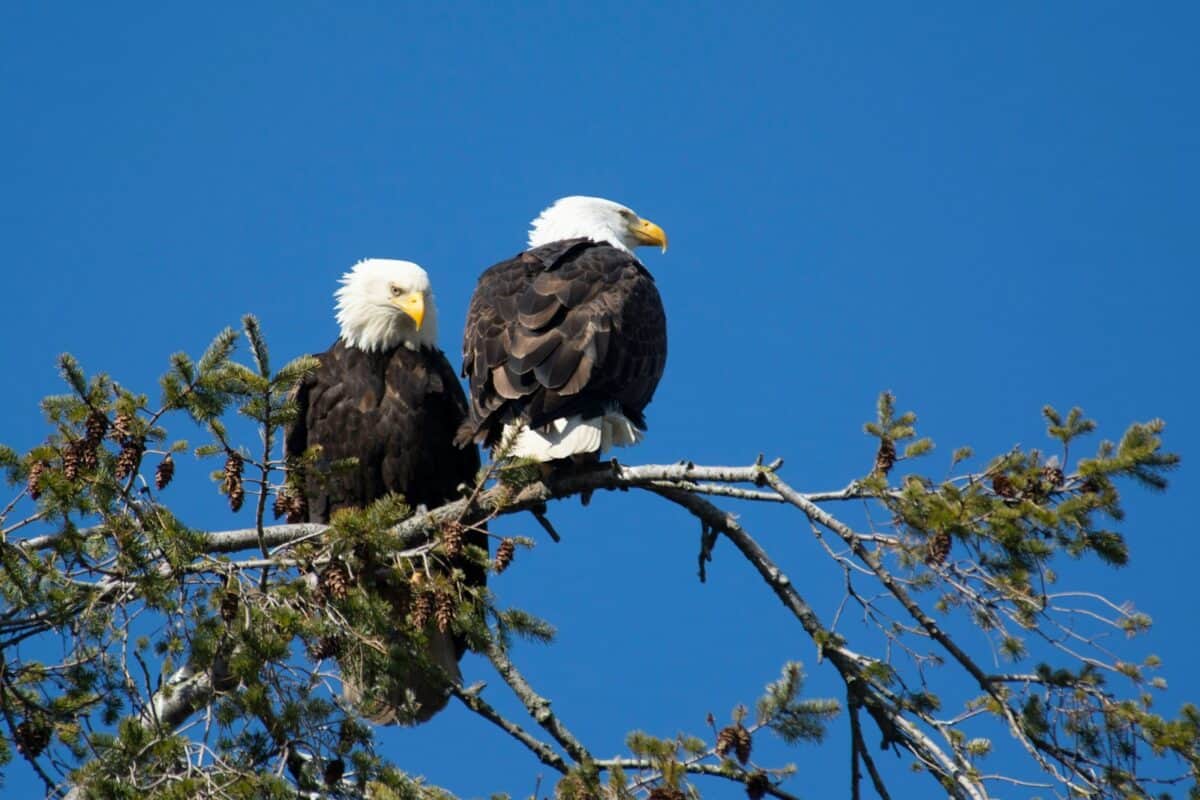
The bald eagle’s approach to selecting a lifelong mate represents one of nature’s most sophisticated partnership formation processes, combining practical assessment with emotional bonding. Through elaborate aerial displays, collaborative nest building, territorial evaluation, and compatibility testing, these magnificent birds establish relationships that frequently last decades. This methodical approach to mate selection has proven remarkably successful, contributing significantly to the species’ recovery from endangered status to its current thriving population levels across North America.
Understanding these complex mating behaviors provides important insights for conservation efforts, particularly as eagle populations continue expanding into previously abandoned territories. The fact that bald eagles invest so heavily in finding the right partner underscores the evolutionary importance of their monogamous lifestyle and the specialized collaborative skills needed for successful eagle reproduction. As symbols of both freedom and fidelity, bald eagles demonstrate that even in nature, the most successful relationships are built on a foundation of compatibility, cooperation, and commitment that extends far beyond a single breeding season into a genuine partnership for life.
- How Baby Giraffes Learn to Walk Within Hours - August 16, 2025
- Why We Need to Save The Cross Gorilla, The Most Endangered Primate in The World - August 16, 2025
- This Snake Can Climb Glass Walls - August 16, 2025

